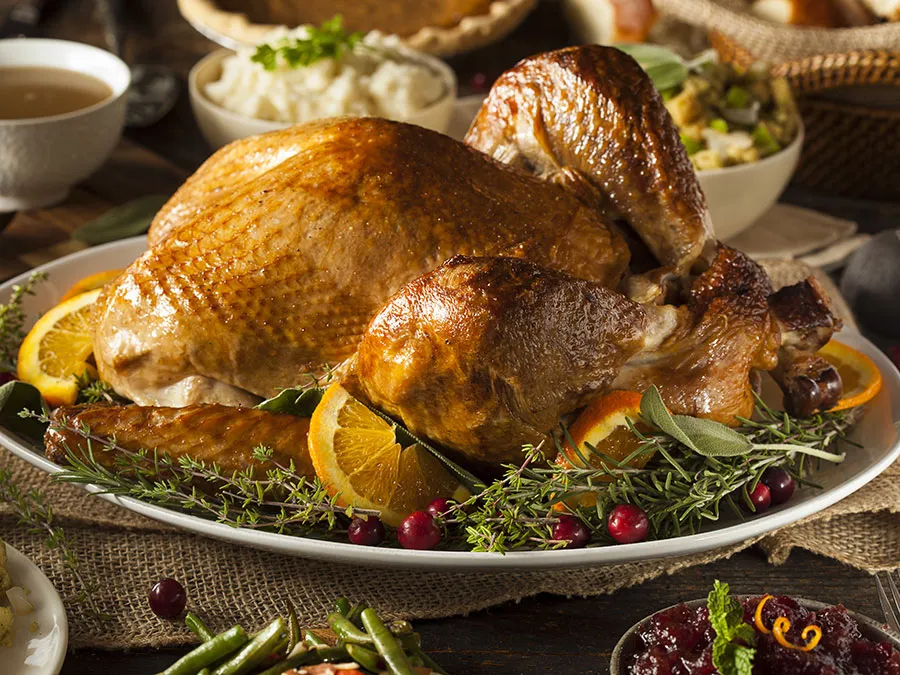Talking turkey safety; tips from UK extension
Published 3:15 pm Friday, November 17, 2023
UK Extension Service
It’s nearly Thanksgiving, and soon delicious, juicy turkeys will take center stage at many of our holiday meals. You know food safety is my thing, and it should be your thing too. It’s so important that these birds are properly cooked and prepared, because we don’t want anyone to get sick from a food-borne illness. Remember, a turkey can look perfect as if it fell out of a Southern Living magazine but if it’s not cooked properly it can ruin your holiday.
It does not matter whether you purchase a fresh or frozen turkey. The U.S. Department of Agriculture has cooking safety tips for both on its Food Safety and Inspection Service website. But if you plan to purchase a pre-stuffed turkey, make sure it is frozen and has a seal that states it was inspected by either the USDA or a state department of agriculture. The USDA does not recommend that you purchase a fresh, pre-stuffed turkey, because if handled incorrectly, harmful bacteria can quickly grow in the stuffing. Plus, turkeys with the stuffing cooked inside tend to be dry. Save yourself the risk of a dry bird by making your stuffing on the side.
You can safely thaw turkeys in either the refrigerator, cold water, or the microwave if the turkey is cooked immediately. You can safely cook a frozen turkey, but realize that will it need to cook at least 50 percent longer than a thawed one. Please remember that a frozen turkey takes days to thaw in the refrigerator, which is by far the safest method of thawing. Plan ahead and check out these tips for thawing times by pound.
When thawing a turkey in the refrigerator:
• Plan ahead: Allow approximately 24 hours for each 4 to 5 pounds in a refrigerator set at 40 °F or below.
• Place the turkey in a container such as a large pan or bag to prevent the juices from dripping on other foods.
A thawed turkey can remain in the refrigerator for 1 or 2 days before cooking.
When thawing a turkey in cold water, allow about 30 minutes per pound. This method is a little more involved but can thaw a turkey quickly in a pinch.
First be sure the turkey is in a leak-proof plastic bag to prevent cross-contamination and to prevent the turkey from absorbing water, resulting in a watery product. Submerge the wrapped turkey in cold tap water. Change the water every 30 minutes until the turkey is thawed. Cook the turkey immediately after it is thawed.
As far as microwave thawing a turkey, it can be done. Follow your manufacturer’s instructions and cook the turkey immediately after thawing. If you wish to use this method I hope your microwave is big enough.
Once you are ready to cook your turkey, set the oven temperature no lower than 325 degrees Fahrenheit and sit it on a rack in a shallow roasting pan. You can add one-half cup of water to the bottom of the pan to keep the turkey moist. For optimal food safety, the USDA recommends that you cook the turkey and stuffing separately, so you can make sure both reach 165 degrees Fahrenheit throughout each product.
Measure the internal temperature of the turkey with a food thermometer, even if it has a pop-up thermometer in it. Check the temperature in several locations including the thickest part of the breast, the innermost part of the thigh and the innermost part of the wing to make sure the temperature is 165 degrees throughout.
Remember to store leftovers within two hours after the meal. Discard any food that’s been left out longer than that. To make reheating easier, divide leftovers into small portions. Eat leftovers within three to four days if they are put in the refrigerator. Leftovers that are frozen will keep for two to six months. Remember when reheating leftovers, check that the internal temperature of the food is at least 165 degrees.
Have a happy and safe holiday everyone! I’m serious, food safety is no joke. Be sure to follow these instructions to ensure a safe bird this Thanksgiving. Your guests will thank you.







